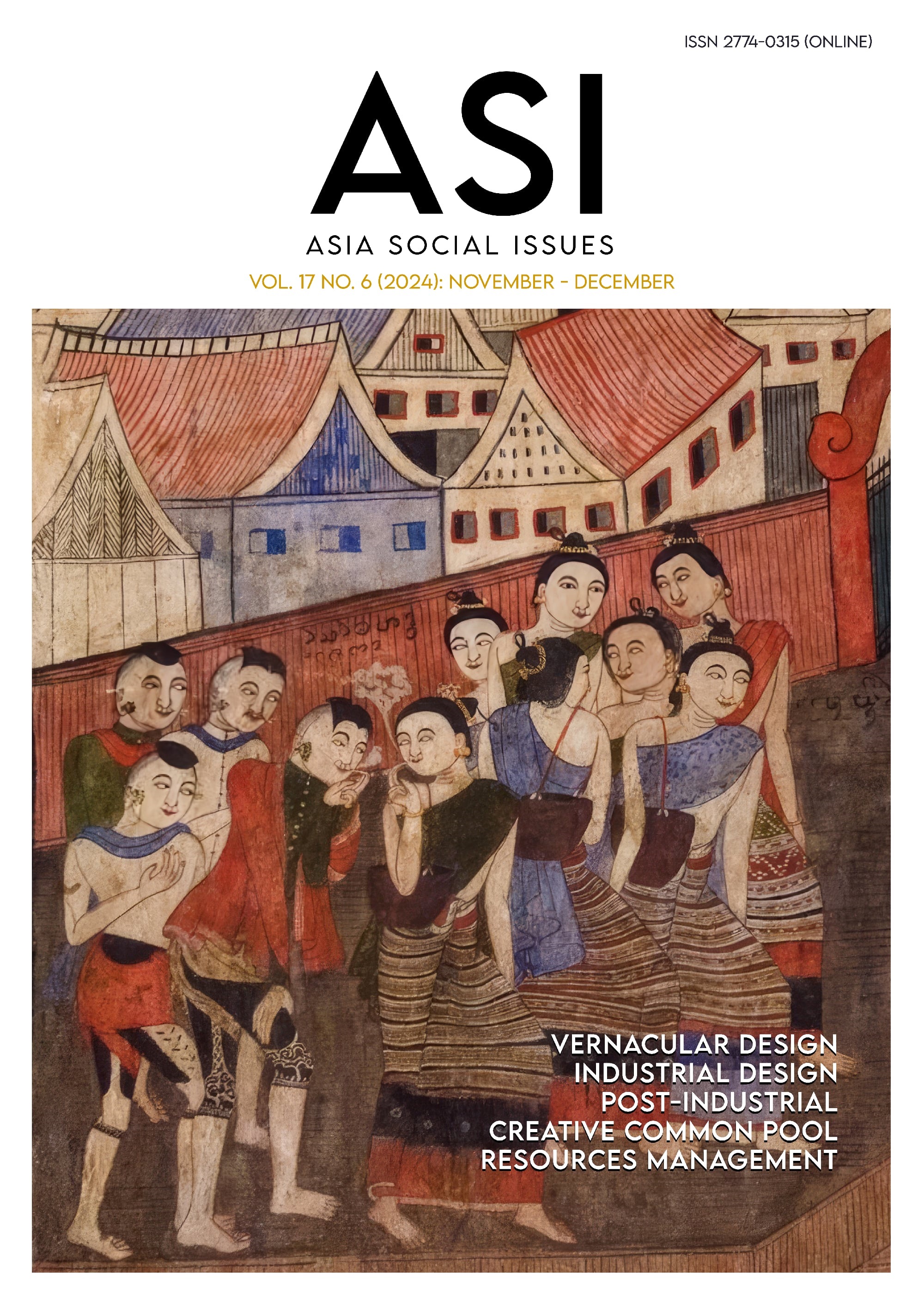Reed Dyeing from Color Plants in Khao Phluang Forest and Neighborhood of Chai Badan Phiphat College, Chai Badan District, Lopburi Province
Main Article Content
Abstract
This research investigated 1) a dyeing method for reeds, and 2) types of color plants found in Khao Phluang Forest, Chai Badan District, Lopburi Province, and mordants affecting shade (CIEL*a*b*) and color fastness. The tool for color measurement was a Chroma meter: Konica Minolta CR – 400. The measurements of color were performed after airing; then the dyed reed was washed with distilled water. Next, it was aerated for seven days before the remeasurements of the color values.
The reed dyeing process involved soaking the reed in warm water for an hour, followed by soaking it in a mixture of alum, sodium bicarbonate, and lukewarm water for 30 minutes. After aeration, the reed was boiled in the dyeing water for 20 minutes. Color measurements revealed that reeds dyed with turmeric and neem barks, and neem leaves resulted in shades of yellow, red, and brown, respectively. The reed dyed with turmeric, using tamarind juice as the mordant, exhibited the strongest color (CIEL*a*b* = 48.68, 15.01, 41.56). Meanwhile, reeds dyed with neem barks appeared in a shade of red. The use of neem leaves as the dyeing plant did not yield any significant difference from the undyed reed at a significance level of .05.
Article Details

This work is licensed under a Creative Commons Attribution-NonCommercial-NoDerivatives 4.0 International License.
Copyright: CC BY-NC-ND 4.0
References
Chindawutkul, S. (2019). Reed dyeing with natural dyes. Department of Science Service Ministry of Science and Technology Journal, 68(209), 21-23.
Nammakorn, K., Atorngitjawat, P., & Watcharaporn, K. (2020). Study and development process for reed dyeing with natural dyes using Laccifer lacca Keer (pp. 743-750). In Proceedings of the 58th Annual Conference. Bangkok, Thailand: Kasetsart University.
Patranich, P. (2015). A study of effects of various mordants added to the dye extracted from Litsea Glutionosa (Lour) leaves on color shades of dyeing silk thread through exhaustion dyeing (Master’s thesis). Pathum Thani, Thailand: Rajamangala University of Technology Thanyaburi.
Pimchan, P. (2019). The manufacture and development of natural color for reed dyeing. Maha Sarakham, Thailand: Rajabhat Maha Sarakham University.
Pimchan, P., & Uthaiku, A. (2021). The process of dyeing and coating the Sedge by natural materials with a single material to gives many color values for development the unique product. Maha Sarakham, Thailand: Rajabhat Maha Sarakham University.
Pimpraporn, P. (2015). A study of effects of various mordants added to the dye extracted from litsea glutionosa (Lour) leaves on color shades of dyeing silk thread through exhaustion dyeing process (Master’s thesis). Thailand, Thailand: Rajamangala University of Technology Thanyaburi.
Rahman, Md M., Ireen, S., Biswas, J., & Alam, Md S. (2020). Effects of different mordants used in turmeric dyeing with cotton fabric. International Journal of Innovation and Applied Studies, 29(4), 1184-1188.
Thongthummachat, S., Srichooyong, C., Varin, W., & Pimchan, P. (2011). Determination of heavy metals in synthesized dye following with natural colour producting for reed. Rajabhat Maha Sarakham University Journal, 5(2), 193-202.
Worachetwarawat, P., & Worachetwarawat, P. (2018). The study of dyeing methods and dyestuffs that are appropriate for silk dyeing with Nypa Plam. Songkhla Thailand: Rajamangala University of Technology Srivijaya.


